A Day at the Abhayagiri Monastery
Of the three monasteries which define the Sacred City of Anuradhapura, our favorite was the Abhayagiri, towards the north. We spent hours roaming the sacred grounds, talking to the people who worship there, and getting lost among remnants of the distant past.
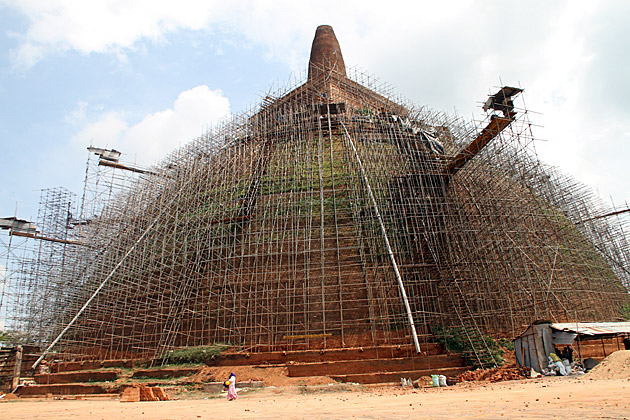
In the first century BC, a Sinhalese King by the name of Vattagamini Abhaya had been forced to flee and abandon his capital during a Tamil invasion. During his retreat, he overheard the gleeful mocking of a Hindu priest named Giri. “The great black lion is fleeing!” Fourteen years later, the king returned with a mighty army and crushed the occupation. In celebration, he established a monastery, and named it after himself (Abhaya) and the priest who had stoked his ire (Giri).
We started our exploration of the zone at an immense, scaffold-covered stupa. Major refurbishment was going on here and, around back, we found a long line of women balanced on dangerous-looking slats of wood, passing buckets of cement to the top of the stupa. They asked me to join in, and the woman I had replaced clapped and laughed at her luck. I felt bad eventually leaving, since I was twice her size and half her age… the buckets were heavy enough for me, and must have been awful for her. These people working for free, restoring the stupa out of a sense of good, Buddhist civic duty.
For nearly a kilometer in every direction from the stupa, the ruins of Abhayagiri are scattered about. You can’t walk six feet without kicking an ancient stone or stumbling upon another half-decayed statue. We wandered aimlessly, finding a litany of treasures. A large Buddha statue, sitting serenely under a Bo Tree. A huge pond cut out of stone, known as the Elephant Pool. Not far away was an odd cave temple and, further to the east, the Twin Baths, where monks would cleanse themselves for rituals.
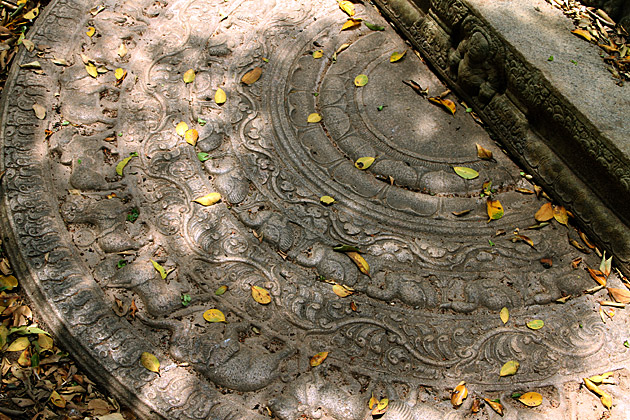
Following signs, we made our way to a couple of amazingly intact moonstones. These semi-circular pieces of carved rock are found at the entrances to temples, and depict five levels of existence. The outermost layer is a ring of fire, representing the pain and agony of life everlasting. Next is a parade of animals: elephant, horse, lion and bull, representing birth, old age, illness and death (in that order). Next, a circle of creeper vine, which symbolizes craving. The following circle shows swans, who represent purity and wisdom. Underneath them, another smaller layer of creeper vines, which demonstrate the lessening of human craving. The final layer is of lotus petals turned towards a seed cup in the center, symbolizing the attainment of nirvana.
Location of the Abhayagiri Stupa on our Map
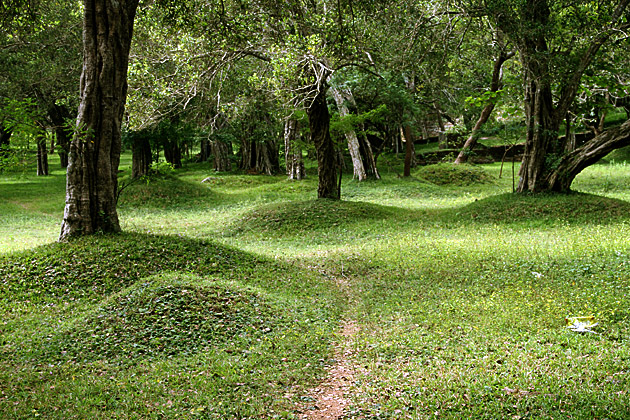
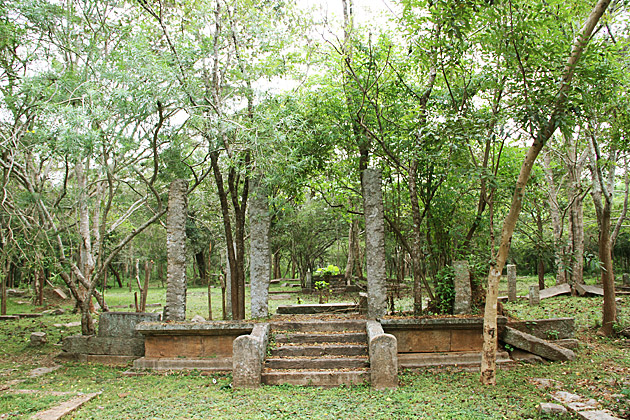
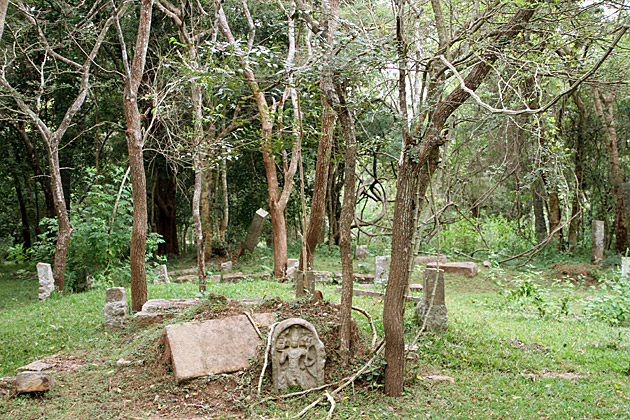
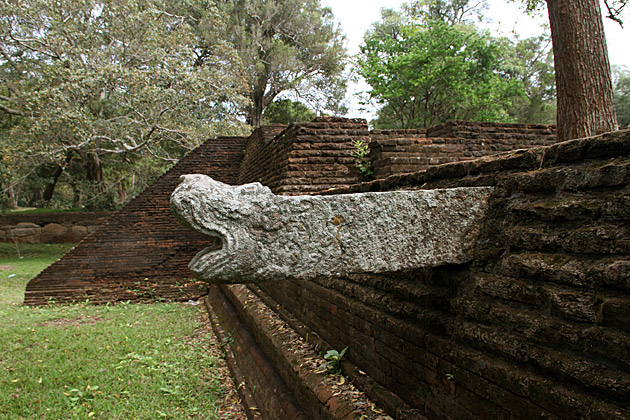
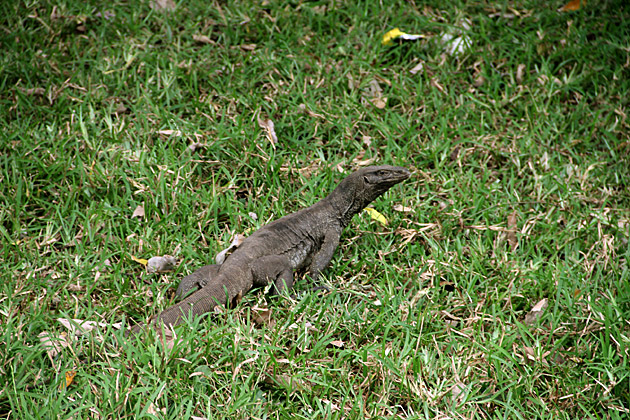
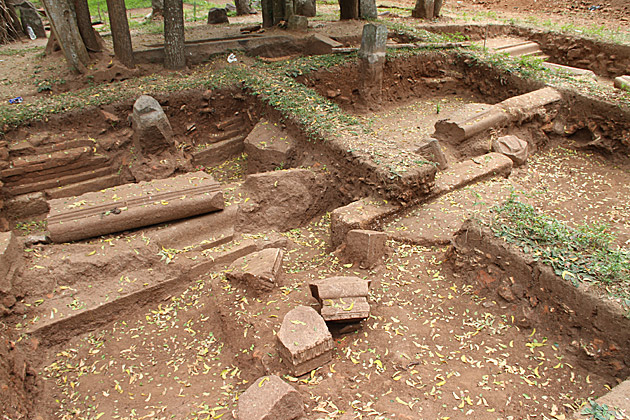
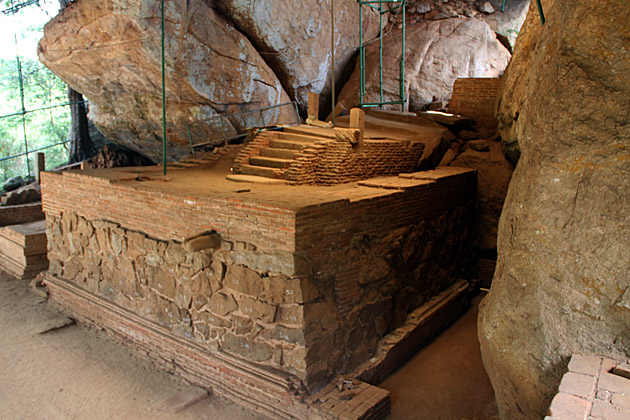



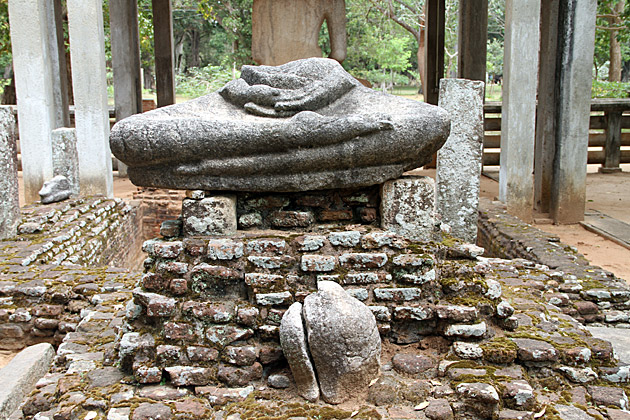
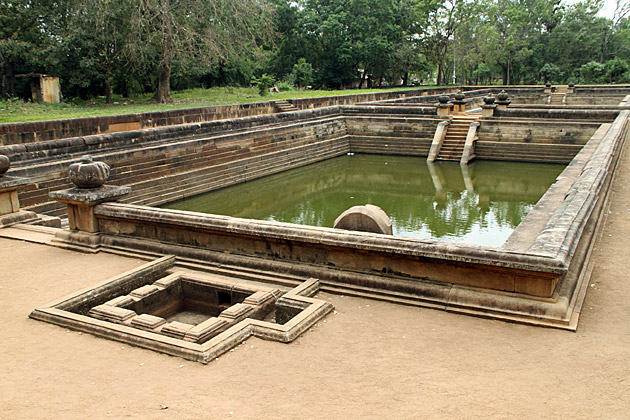

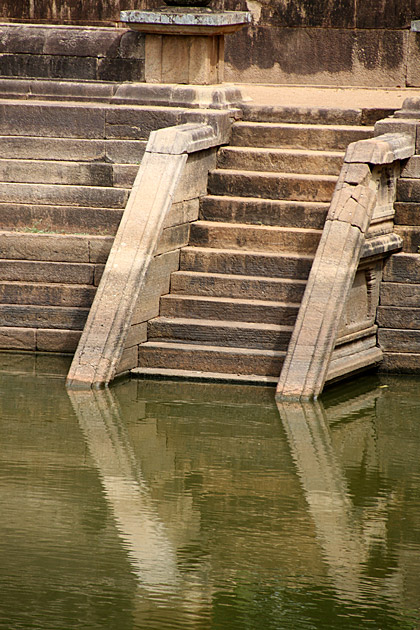
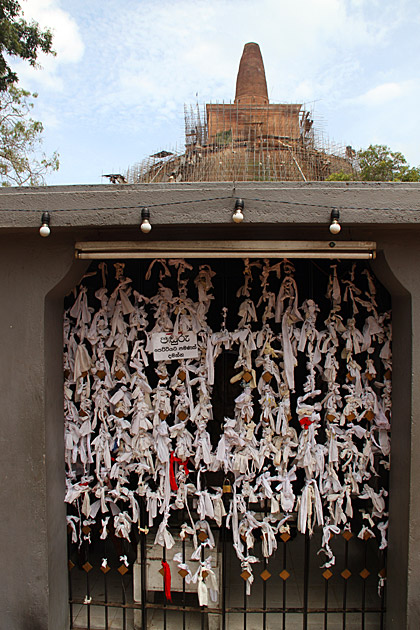
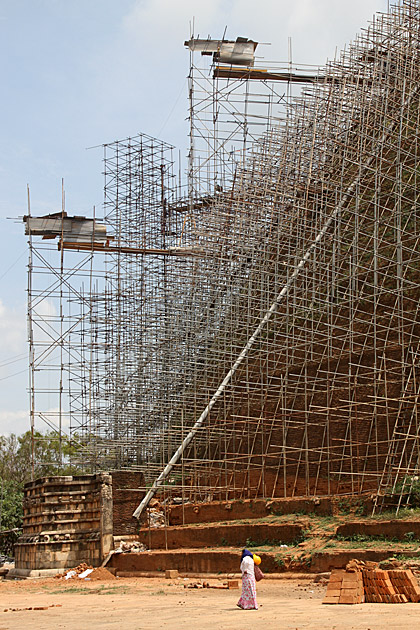
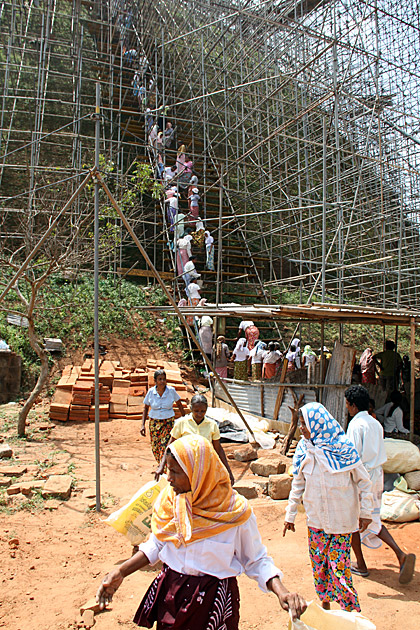
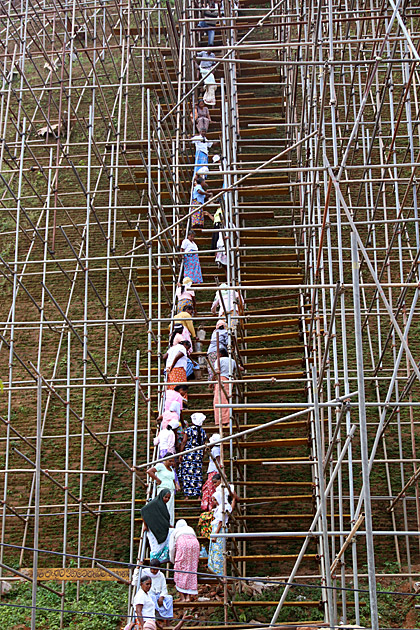

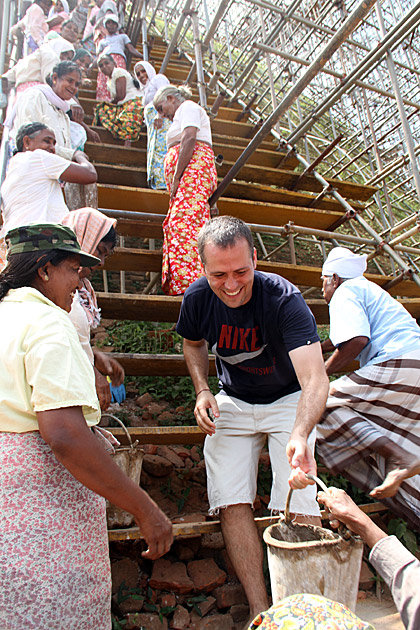
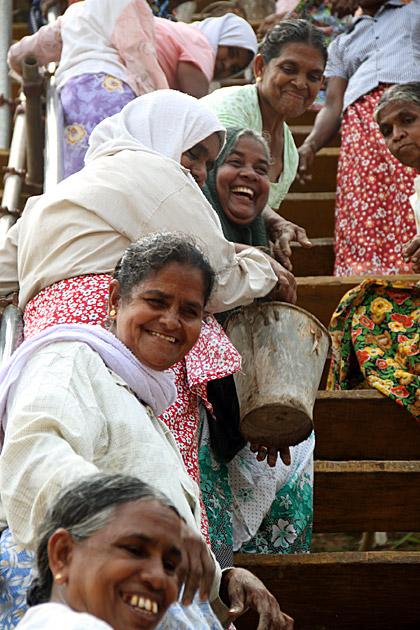
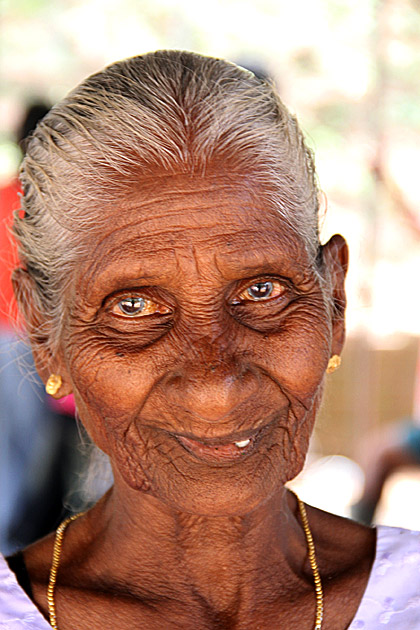
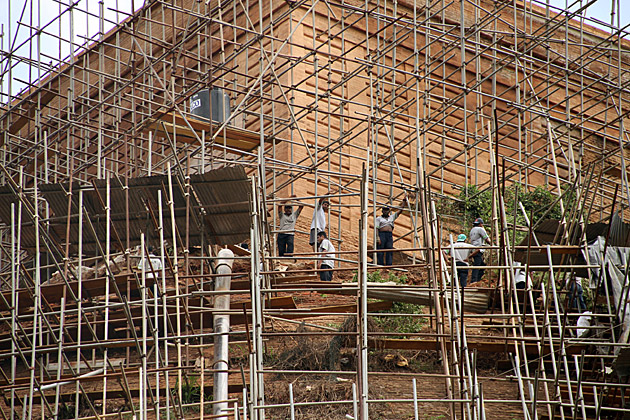
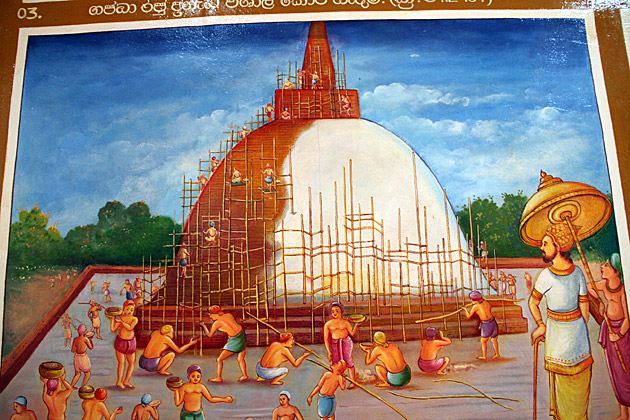
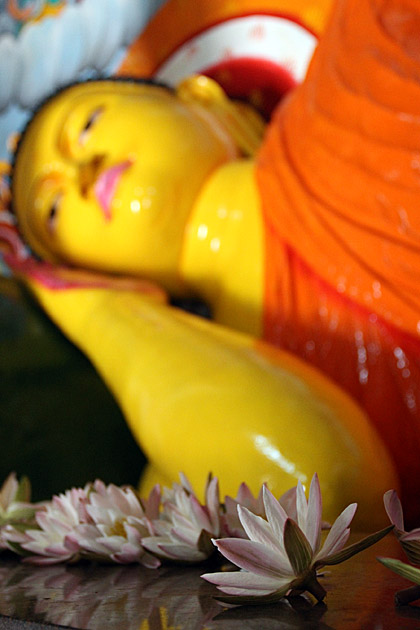
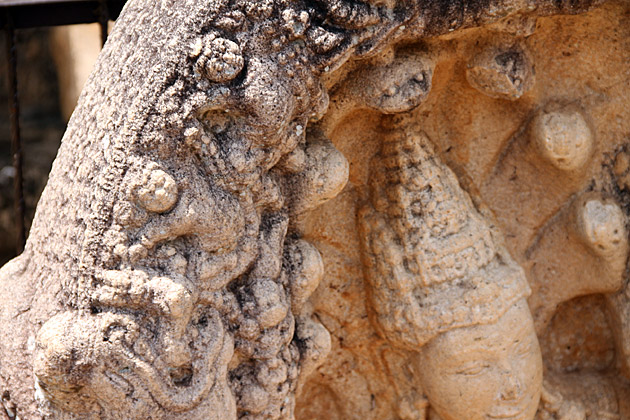
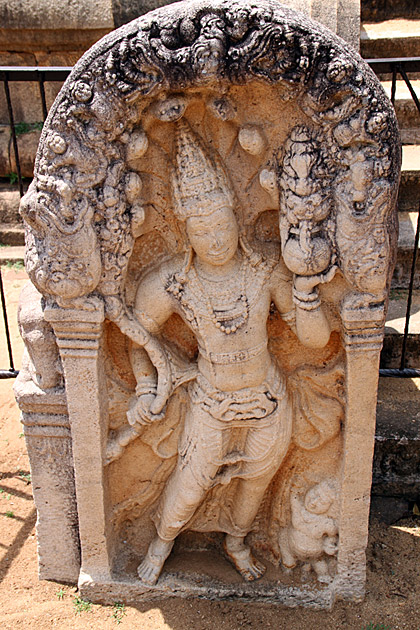
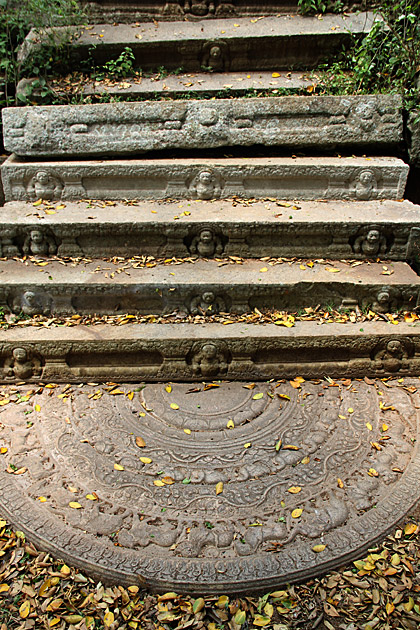

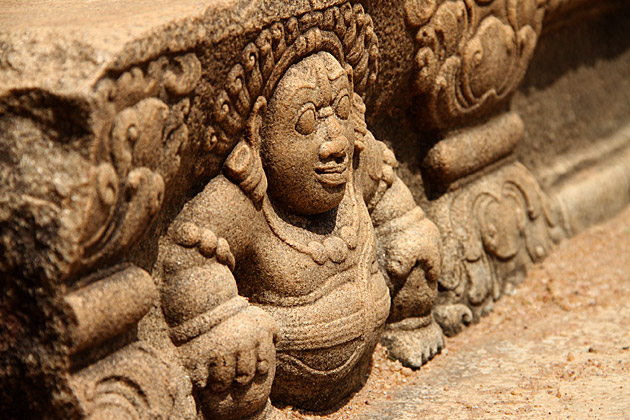
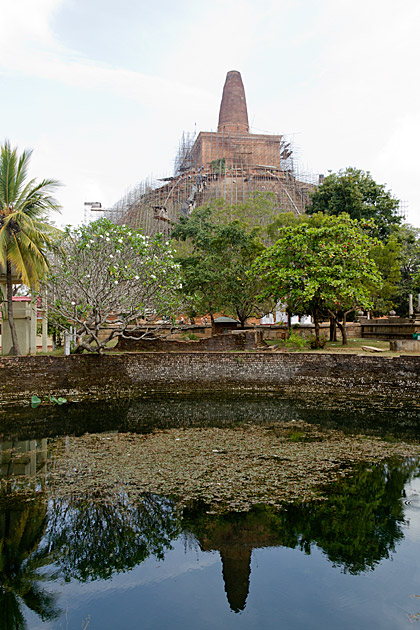
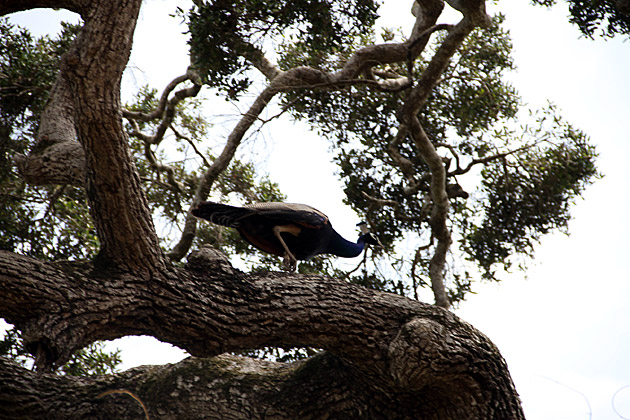
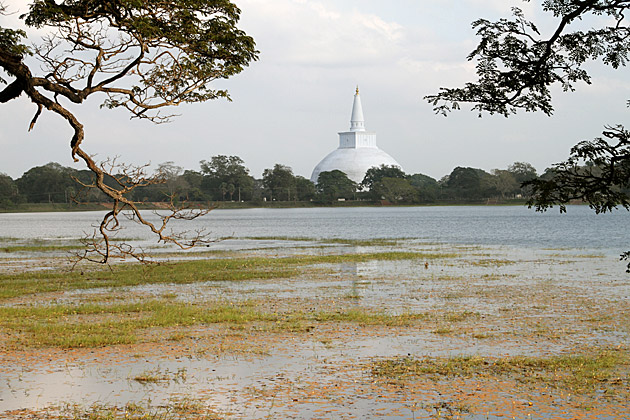
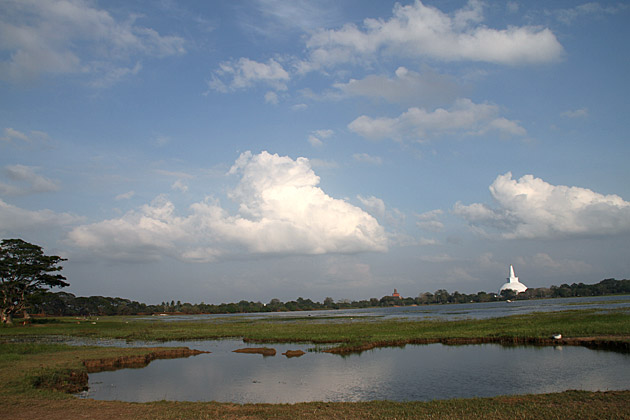
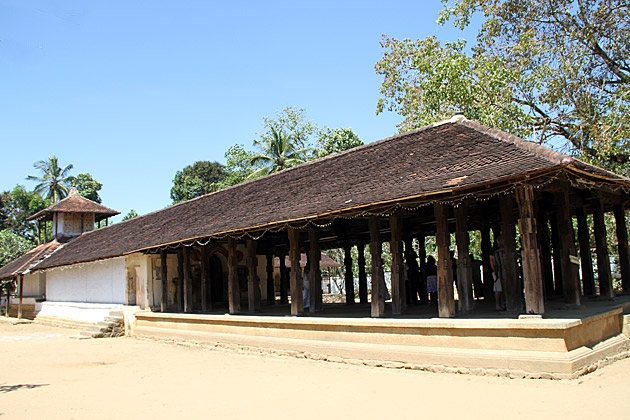

Love the bucket brigade and the old lady. Cheers.
Pingback: The Cave Temples of Dambulla | For 91 Days in Sri Lanka – Travel Blog
A good work every body must wist this page. great. Thanks I love the shramadana team . May th blessings of Lord Buddah shower upon them
The comments on Abayagiri by these young foreigners is so encouraging and lovely, that I felt as a Sri Lankan I should at least do a days shramadana at Abayagiriya Monastry. Altho I might not be able to do much, due to being over 75 yrs of age, my being there itself should be encouragement to others.May the blessing of the noble triple gem shower on these handsome young people who enjoyed their stay at Anuradhapura – our first kingdon over 2000 years ago. God Bless you all.
Pingback: Sri Lanka Bildeindrücke - Neues Top Reiseziel | flocblog